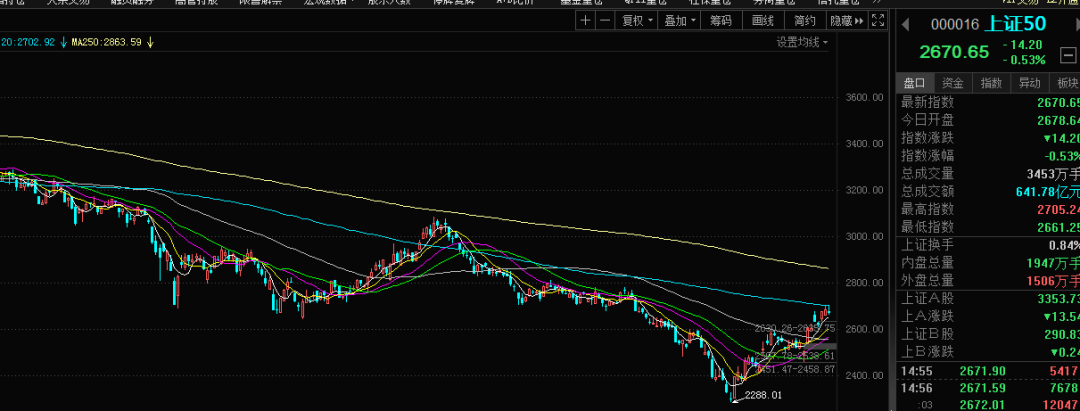At the end of the year, many funds have issued dividend announcements.
Huaxia SSE 50ETF uses October 31 as the base date to distribute dividends for the first time this year. The profit available for distribution is 919 million yuan, and the dividend plan is 0.37 yuan per 10 fund shares. 0.37 yuan for 10 pies.

At the end of the year, many funds distribute dividends in batches, which is actually an operational strategy.
According to the relevant regulations of the Ministry of Finance and the State Administration of Taxation, corporate investors’ fund dividend income is exempt from corporate income tax . Therefore, near the end of the year, some institutions have large capital needs for dividends.
In addition, if the size of the fund is too large, the fund manager can reduce the position through dividends. Therefore, fund dividends and fund purchase restrictions are both strategies to protect the interests of fund investors and pursue stable operations during the operation of the fund.

Observing the holders of this SSE 50ETF, we can see that institutional holdings have always accounted for more than half . Among them, at the end of 2020, institutions accounted for 77.19% , and at the end of last year, institutions accounted for 72.25% . This year’s semi-annual report shows that although the proportion of institutional holdings has declined, it has reached 67.46% .
Judging from the dividend announcement, the fund will distribute dividends at the end of the year every year. Last year, it was 0.41 yuan for 10 distributions, 0.51 yuan for 10 distributions in 2020, and 0.37 yuan for 10 distributions this year.
Therefore, it can be seen from this that the reason why dividend funds doubled near the end of the year is not unrelated to the demand for dividends from some institutions with large funds.

What is a fund dividend?
Fund dividends are the funds that the fund company distributes to us in the form of dividends from the income obtained by a certain fund we hold within a certain period of time.
For example, if the net value of the fund on the dividend distribution date is 3 yuan, and the fund company plans to distribute 1 yuan per dividend, then the net value of the fund will become 2 yuan after the dividend is paid. The dividend of 1 yuan becomes cash and stays in everyone’s account.
If you choose “dividend reinvestment” , then this 1 yuan will be automatically converted into a share of the fund. But in reality, our total assets will not change in any way.
Fund managers generally choose to pay dividends for the following reasons.
1) For the fund itself, the rapid expansion of its scale is a double-edged sword. If the size of the fund expands rapidly, it will greatly increase the difficulty of the fund manager’s operation, so the fund manager will use dividends, that is, use the method of net value conversion to extract part of the fund’s profits and return them to everyone. This can reduce costs, but the total assets of the fund will not change.
2) The market fluctuates, the market opportunities are few, and the risks are increasing. Dividends are also the fund’s defensive investment strategy.
Dividends are equivalent to helping everyone redeem part of the fund’s assets, actively reduce the size and position, and realize the fund’s lightening up . While ensuring the stability of the fund’s performance, it can lock in part of the income and secure the pocket.
It’s easy to popularize here today~~
$Active attack(TIA07033)$ $It’s good to enjoy the shade under the big tree(TIA07032)$ $It’s good to spend under the big tree(TIAA026061)$
There are 8 discussions on this topic in Xueqiu, click to view.
Snowball is an investor social network where smart investors are all here.
Click to download Xueqiu mobile client http://xueqiu.com/xz ]]>
This article is transferred from: http://xueqiu.com/8592131633/237350603
This site is only for collection, and the copyright belongs to the original author.